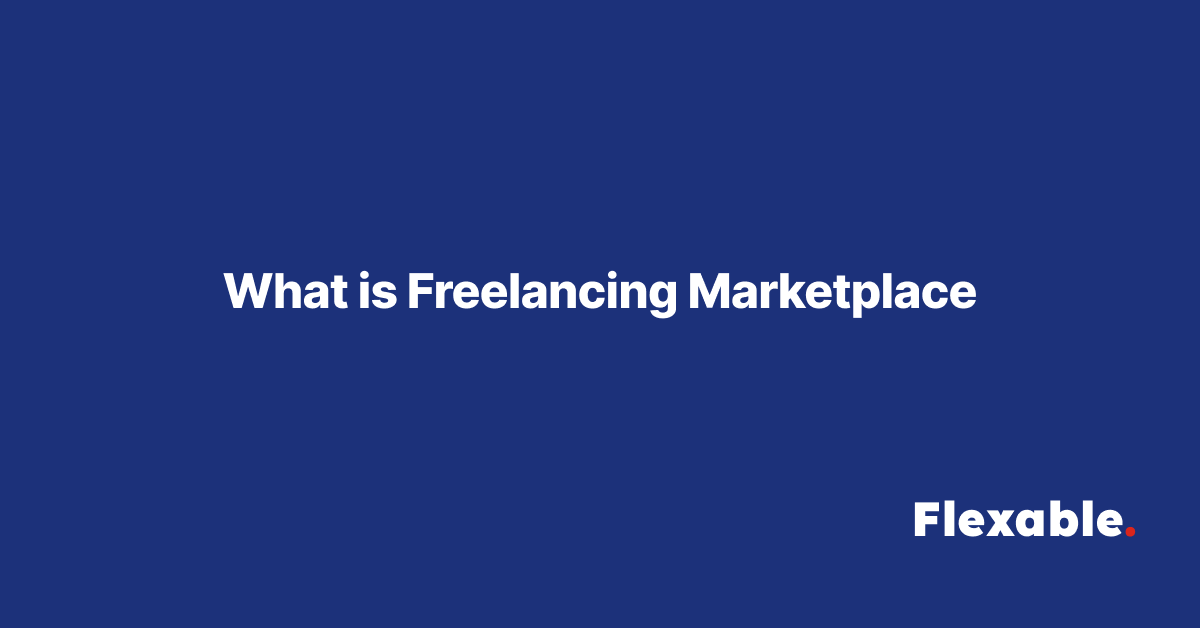A freelancing marketplace is an online platform that connects freelancers with clients or businesses seeking specialized skills and services. These marketplaces act as intermediaries, facilitating collaboration, communication, and payments between two parties—freelancers who offer their expertise and clients who need specific projects completed.
Freelancing marketplaces have revolutionized the modern workforce by enabling global talent to meet demand in a streamlined, efficient manner. They cater to a wide array of industries, including graphic design, content writing, web development, marketing, consulting, and more. Whether you’re a freelancer looking for opportunities or a client needing a task done, a freelancing marketplace is the go-to solution for accessing talent or work quickly and efficiently.
How Does a Freelancing Marketplace Work?
Freelancing marketplaces are designed to simplify the process of finding work or hiring talent. Here’s how the process typically works for both freelancers and clients:
For Freelancers:
- Create a Profile:
Freelancers create a profile showcasing their skills, experience, portfolio, and rates. - Browse Job Listings or Submit Proposals:
Freelancers search for available jobs or projects that match their expertise. Alternatively, clients can invite freelancers to bid on a job. - Submit a Proposal:
A freelancer submits a customized bid, detailing their approach, timeline, and pricing for the project. - Complete the Project:
Once hired, freelancers collaborate with the client to complete the project within the agreed timeline and terms. - Get Paid:
Freelancers receive payment upon project completion, often through a secure escrow system integrated into the platform.
For Clients:
- Post a Job or Search for Talent:
Clients post detailed job descriptions or browse through freelancer profiles to find suitable candidates. - Evaluate Proposals:
After receiving bids, clients review proposals and select the freelancer whose skills, approach, and rates align with their needs. - Hire and Collaborate:
Clients hire the freelancer and use built-in communication tools to discuss project details and progress. - Approve Work and Release Payment:
Once satisfied with the deliverables, clients approve the work and release payment through the platform.
Types of Freelancing Marketplaces
Freelancing marketplaces can be categorized into two broad types:
1. General Freelancing Marketplaces
These platforms cater to a wide range of industries and skills. Freelancers from various fields—designers, writers, developers, marketers, and more—can find opportunities here. Examples include:
- Upwork
- Freelancer
- Fiverr
2. Niche Freelancing Marketplaces
Niche marketplaces focus on specific industries or skill sets, offering specialized talent for targeted needs. For instance:
- Toptal: For top-tier software developers, designers, and finance experts.
- Dribbble: For graphic designers and creatives.
- Behance: For visual artists and designers.
- 99designs: For logo and graphic design projects.
Key Features of a Freelancing Marketplace
- Profile and Portfolio Management:
Freelancers can create profiles that showcase their skills, experience, and previous work, while clients can browse profiles to find the right talent. - Search and Filter Options:
Advanced search filters allow clients to find freelancers based on expertise, location, pricing, or ratings. - Escrow Payment System:
Most platforms include escrow systems to protect both parties. Clients fund the project upfront, and freelancers receive payment only after completing the work. - Ratings and Reviews:
Both freelancers and clients can leave feedback for each other, building trust and accountability within the platform. - Communication Tools:
Built-in messaging and collaboration features ensure seamless communication between freelancers and clients. - Dispute Resolution:
Platforms provide mechanisms to handle disputes, offering mediation or arbitration services when issues arise. - Freelancer Verification:
Some marketplaces verify freelancer credentials or conduct skill assessments to ensure quality.
Benefits of Using a Freelancing Marketplace
For Freelancers:
- Access to Global Opportunities:
Freelancing marketplaces open doors to clients and projects from around the world, allowing freelancers to diversify their client base. - Flexible Work Environment:
Freelancers can choose projects that match their skills, availability, and interests, giving them control over their workload. - Streamlined Payment Process:
Secure payment systems ensure that freelancers are paid promptly and fairly for their work. - Portfolio Building:
Platforms provide an excellent opportunity to showcase your work, gain client reviews, and build a strong reputation.
For Clients:
- Quick Access to Talent:
Clients can find skilled professionals quickly without going through lengthy hiring processes. - Cost-Effectiveness:
Freelancing marketplaces allow clients to hire on a project basis, reducing the costs associated with full-time employees. - Diverse Skill Sets:
Clients can access a wide variety of expertise, from niche skills to general services, all on one platform. - Ease of Collaboration:
Built-in tools make communication, file sharing, and project management simple and efficient.
Challenges of Freelancing Marketplaces
While freelancing marketplaces offer numerous advantages, they also come with challenges:
- High Competition:
Freelancers often face stiff competition, especially in general marketplaces, leading to pressure to lower rates. - Platform Fees:
Many platforms charge fees for both freelancers and clients, which can reduce earnings or increase project costs. - Quality Assurance:
For clients, finding reliable and skilled freelancers among a large pool can be challenging without proper vetting. - Dependency on Platforms:
Over-reliance on a single platform can be risky if changes in policies or algorithms affect visibility or access to opportunities.
How to Succeed on a Freelancing Marketplace
For Freelancers:
- Build a Strong Profile:
Highlight your skills, include a professional photo, and add a compelling bio. Showcase your best work in your portfolio. - Tailor Your Proposals:
Personalize your bids to address the client’s specific needs and demonstrate your understanding of their project. - Maintain Professionalism:
Deliver quality work on time, communicate effectively, and maintain a positive attitude to earn great reviews. - Leverage Reviews and Ratings:
Focus on building a strong reputation by collecting positive client feedback.
For Clients:
- Write Detailed Job Descriptions:
Clearly outline the project scope, deliverables, budget, and deadlines to attract the right freelancers. - Evaluate Profiles and Portfolios:
Review freelancer profiles and past work to ensure their expertise aligns with your project requirements. - Communicate Expectations:
Maintain open communication to clarify project details and ensure smooth collaboration. - Start with Small Projects:
If you’re new to freelancing platforms, test freelancers with smaller tasks before assigning larger or ongoing projects.
Conclusion
A freelancing marketplace is a powerful tool for connecting skilled professionals with businesses and individuals seeking talent. These platforms have reshaped the global workforce, offering flexibility, cost-effectiveness, and access to diverse opportunities. Whether you’re a freelancer looking to grow your career or a client searching for top talent, freelancing marketplaces provide a reliable and efficient way to achieve your goals.
By leveraging the features, tools, and opportunities these platforms offer, both freelancers and clients can navigate the dynamic freelancing landscape with confidence, building successful partnerships and achieving exceptional results.

